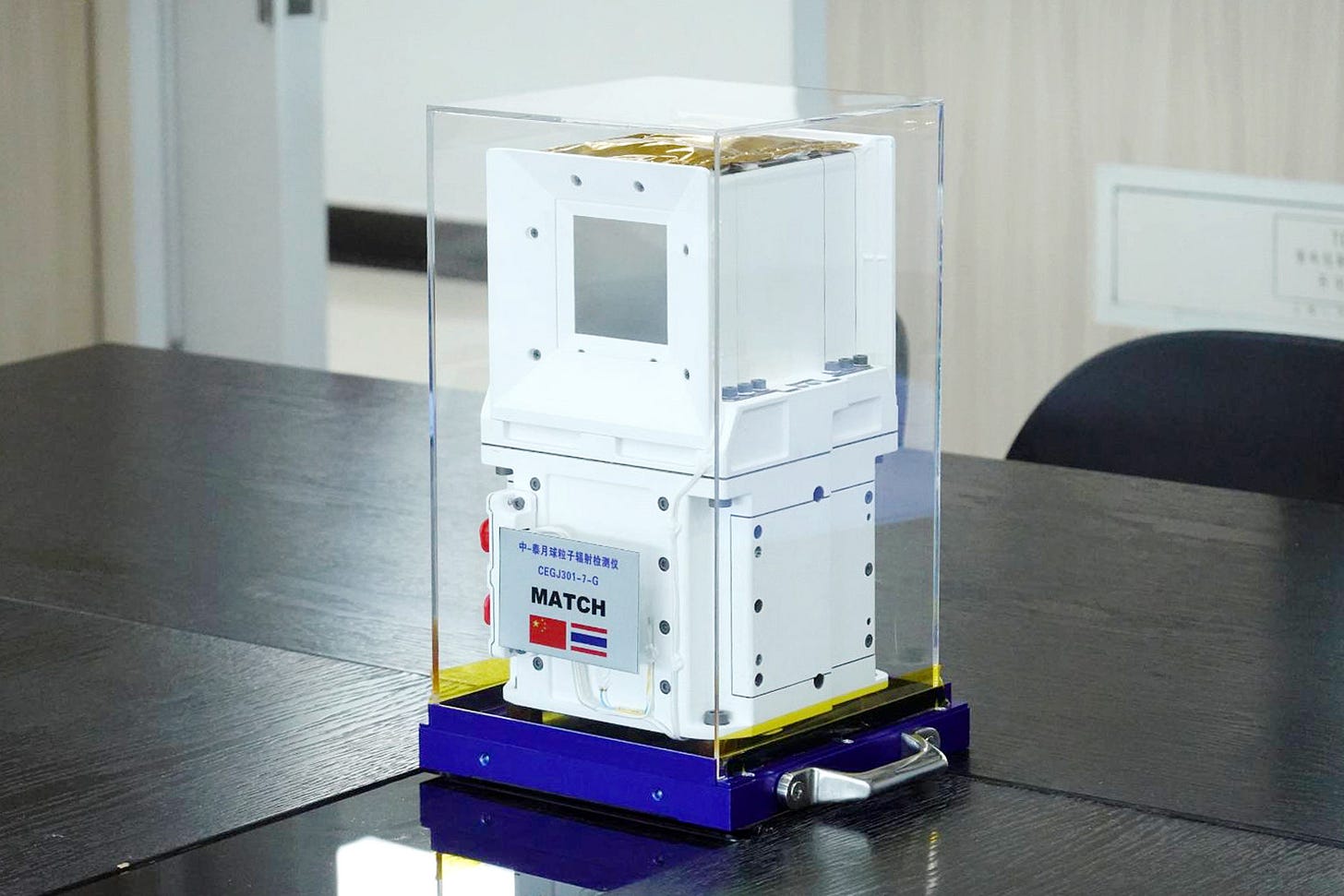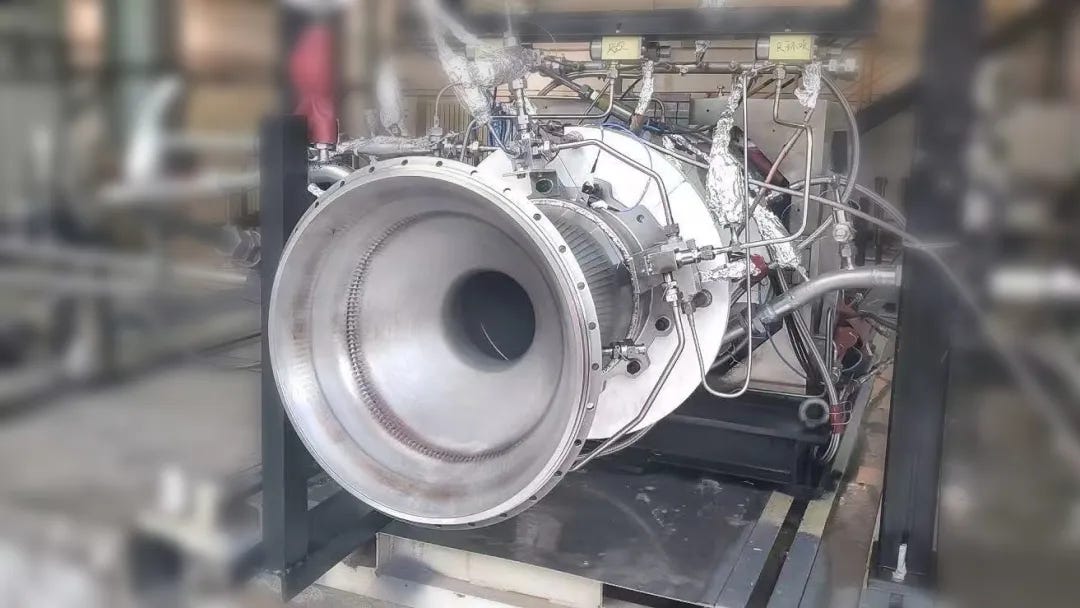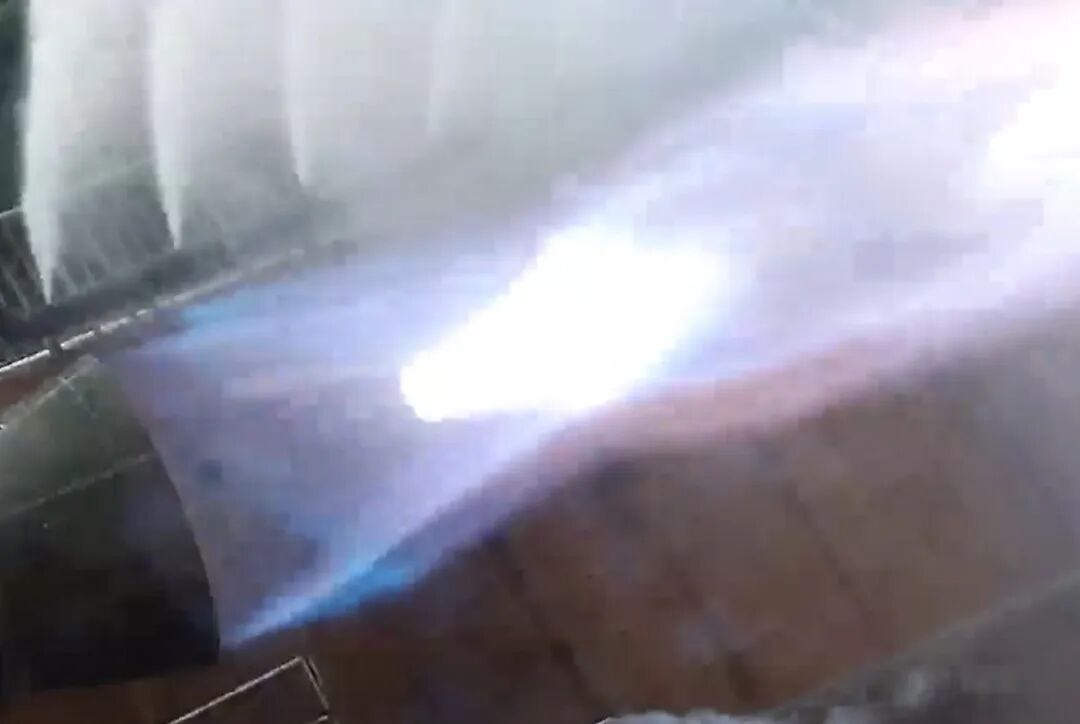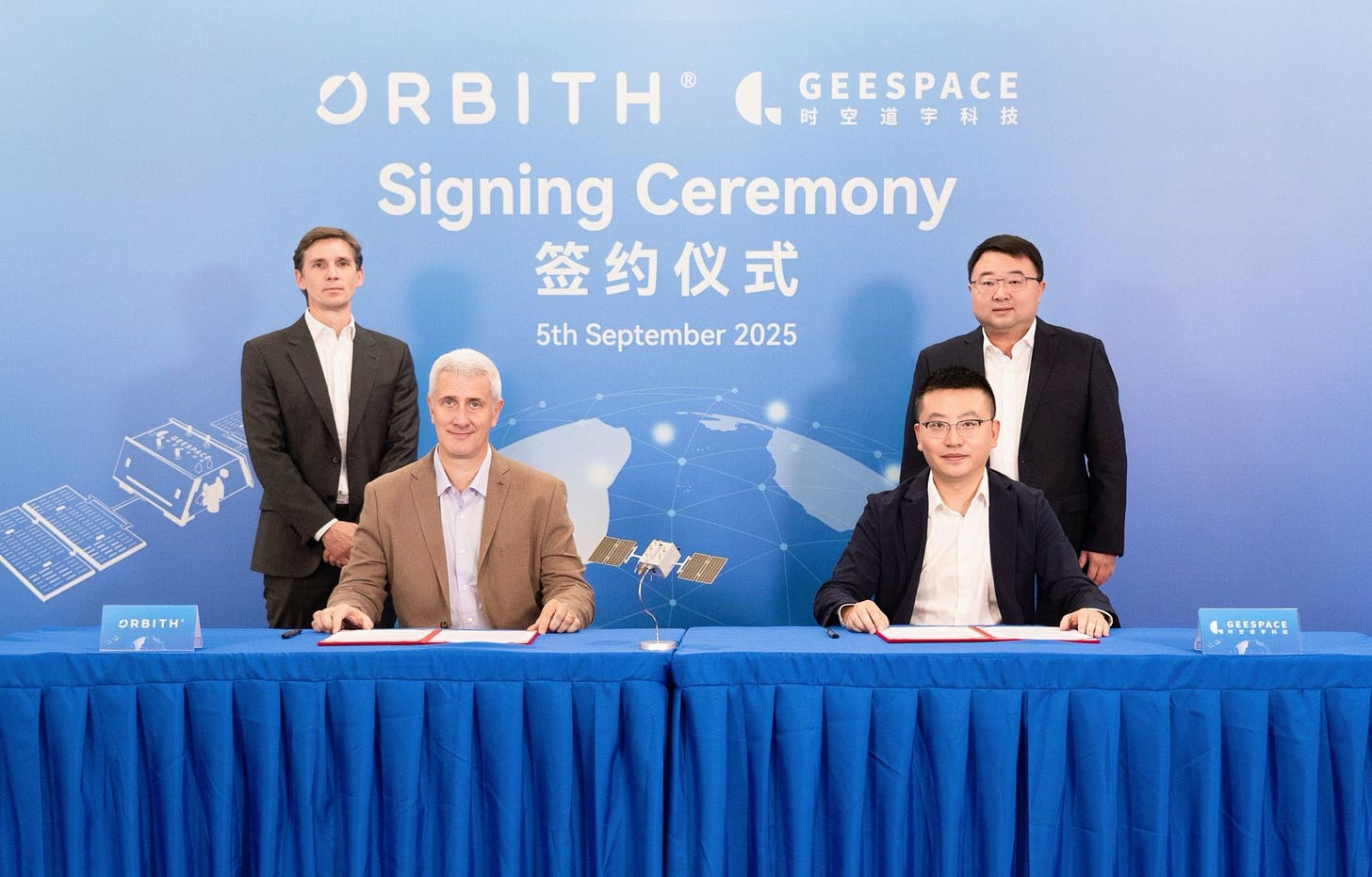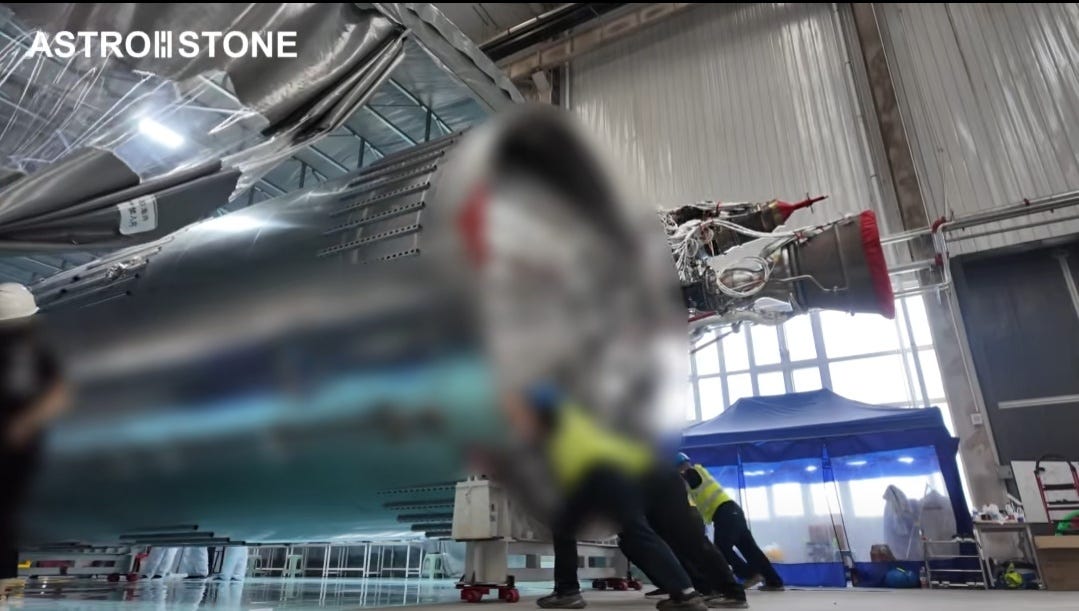International Cooperation Efforts and Agreements Move Forward
Plenty of hardware testing too!
To start September, China’s space sector has seen a flurry of international activity for business and lunar exploration. Alongside that, hardware testing and manufacturing has been moving forward for new launch vehicles.
Thailand delivers Chang’e 7 experiment
Thailand’s National Astronomical Research Institute handed over its Moon Aiming Thai-Chinese Hodoscope (MATCH) instrument to China on August 29th, ahead of installation on the Chang’e 7 mission’s lunar orbiter. MATCH will head towards the Moon in the second half of 2026 with a variety of other scientific experiments.
During the Chang’e 7 mission, MATCH aims to detect high-energy particles within cosmic radiation, alongside studying the interactions among the Sun, Earth, and Moon influenced by these particles. Developing the instrument was a collaborative effort by the National Astronomical Research Institute of Thailand, Mahidol University, China’s Deep Space Exploration Laboratory, as well as agencies under the Chinese Academy of Sciences, including the China National Space Science Center, the Changchun Institute of Optics, Advanced Mechanics, and Physics, the Institute of Modern Physics, and Jilin University.
MATCH is a relatively small instrument, weighing approximately 4,900 grams and measuring 130 by 110 by 250 millimeters, made of a magnesium alloy.
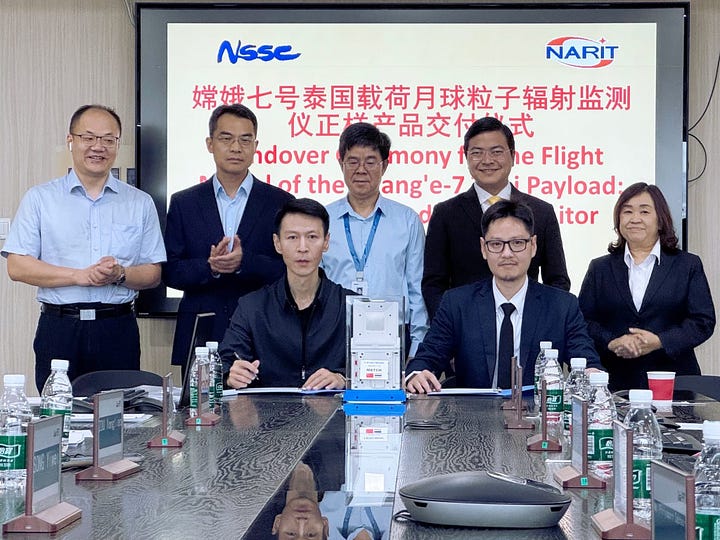
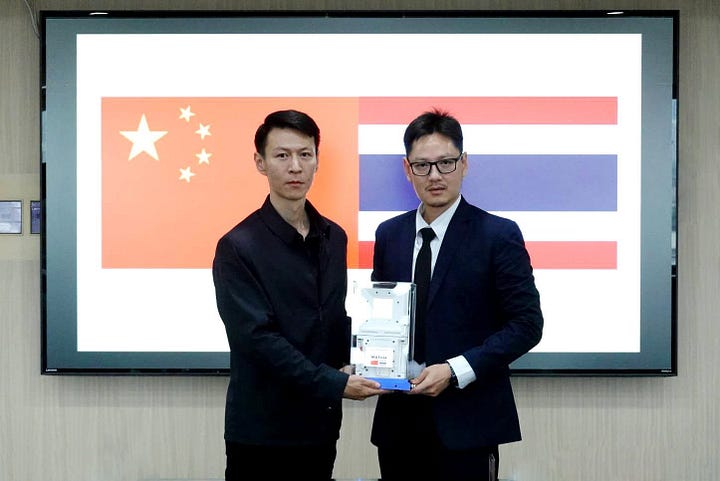
CAS Space unveils Kinecore-4 engine
On September 4th, CAS Space announced it had successfully completed a 650-second (10 minutes and 50 seconds) firing of its Kinecore-4 (力擎四号) engine, likely burning storable propellants. For the test firing, the nozzle-less engine produced 2 tons of thrust to verify its design, combustion efficiency, as well as startup and shutdown sequence.
CAS Space says the Kinecore-4 engine will power an optional upper-stage for Kinetica-2, already able to send 12,000 kilograms to low Earth orbit, for delivering customer spacecraft to geostationary transfer orbits and deep space.
China to kick off planetary defense mission, systems
China Daily and CGTN are reporting that China is initiating a planetary defense mission project this year. According to Wu Weiren (吴伟仁), the Chief Designer of China's highly successful Lunar Exploration Program and Director of the nation's Deep Space Exploration Laboratory, the defense mission will target a near-Earth asteroid and aim to move its orbit by three to five centimeters.
A mission to do so would use a fly-along–impact–fly-along architecture with two spacecraft, an observer and an impactor. An observer would arrive first to survey the target, then an impactor would hit at high speed, followed by the observer and Earth-based instruments measuring the results.
Alongside conducting a planetary defense mission, China also envisions establishing a comprehensive planetary defense architecture. That would see an integrated space-ground monitoring and alert network to enable an early warning system for potentially dangerous asteroids heading for the Earth or Moon, then followed by an in-orbit response.
At the moment, China is flying its first asteroid sample return mission, Tianwen-2, which is en route to asteroid 2016HO3/469219 Kamoʻoalewa, with a planned arrival in the summer of 2026, where it will gather between 200 and 1,000 grams of samples. Around 2029, those samples will be returned to Earth during a flyby.
Taken from my work for Proxima Report’s weekly newsletter.
LandSpace fires full-flow stage combustion engine
LandSpace quietly announced on September 7th, in the comments of a WeChat post (and via a new, possibly official Twitter account), that it has successfully fired up its liquid methane and liquid oxygen burning full-flow staged-combustion engine. Details on the firing were not shared, rumored to have happened weeks ago, but it is said the test of the engine was at half power (about 100 tons of thrust).
The development status of the engine is largely unknown, but it is expected to power a 10-meter-diameter fully-reusable launch vehicle sometime in the 2030s, currently nicknamed ‘Zhuque-4’ by Chinese space fans. This engine may also end up supporting an upgraded variant of the soon-to-debut partially reusable Zhuque-3 too.
Geespace and Orbith sign market agreement
Geespace announced via its Weibo and LinkedIn accounts that, on September 5th, it has signed a memorandum of understanding with Argentina’s Orbith to expand the company’s Geely Future Mobility Constellation services into South American markets, through collaboration on policy access, technical cooperation, and market development for relevant services. With the memorandum, Orbith is planned to become an important strategic partner of Geespace in South America.
According to Geespace, more than forty percent of rural areas in Argentina remain unconnected to the internet, while other remote areas face issues of unstable coverage and insufficient transmission speed. This collaboration will help upgrade Argentina’s and South America’s digital infrastructure, providing more inclusive and reliable connectivity services to local and regional markets. Where possible, both sides will also explore utilizing low Earth orbit and geostationary orbit satellites to further improve connectivity.
Astronstone completes first second-stage
Astonestone shared on August 29th that it has completed its first second-stage of its AS-1 launch vehicle. The company says the second-stage is lightweight and able to hold cryogenic propellants in its tanks.
In the near future, Astronstone plans to conduct a static fire of the second-stage to verify its design along with the company’s engine choice, possibly Jiuzhou Yunjian’s (九州云箭) Longyun, generating 70 tons of thrust. Past weeks have seen a vibration test of second-stage hardware and the manufacturing of a test article.
At the moment, AS-1 is planned to be 4.2 meters in diameter and 70 meters tall and weigh 570,000 kilograms fully fuelled, while being made of stainless steel and burning liquid methane and liquid oxygen, with nine engines on the first-stage generating 700 tons of thrust to carry 15,700 kilograms into orbit when expended or 10,000 kilograms when reused. Recovery for first-stage reuse will see the first-stages caught by a catch tower.
Piesat signs deal with Pakistan

During the China-Pakistan business-to-business investment summit on September 4th, Piesat Information Technology Co Ltd (航天宏图信息技术股份有限公司), a remote sensing and image processing firm, signed a deal with an unnamed Pakistani firm for a satellite internet project. The deal, valued at 2.9 billion Yuan (about 406.3 million United States Dollars, on September 7th), was agreed upon in the presence of Prime Minister Shahbaz Sharif (شہباز شریف), with some details to be finalized in the near future.
Piesat’s deal with Pakistan comes a week after it signed a secretive contract worth 990 million Yuan (138.7 United States Dollars) for a non-China-based customer.
In the first half of this year, Piesat was reported to be struggling financially, not paying bills and missing payroll for employees. With the two new large foreign contracts, the company looks to be back on better footing for now.
Orienspace test Yuanli-110 engine components
Orienspace shared on September 4th that it had fired up the gas generator and turbopump of its Yuanli-110 engine. According to the company, the firing verified the coordination between the two components along with a partial startup and shutdown. Reportedly, no anomalies were found with the engine, confirming component design choices.
The last test of a Yuanli-110 engine came in December 2024, before Orienspace swapped to using the YF-102 for its Gravity-2 during initial flights. Additionally, one month ago the company received hundreds of millions of Yuan (at least 28 million United States Dollars1) in new funding, with Yao Song (姚颂), Co-Chief Executive Officer and Co-Founder, departing the company just before.
Russian satellites to ride atop Chinese rocket
ComNews reports on September 1st that two Russian 5G direct-to-cell satellites will launch atop of a private sector Chinese rocket in the summer of 2026. A launch provider has not yet been selected, with CAS Space (of the Kinetica series of rockets) and Galactic Energy (with the Ceres series of launch vehicles) being the two leading options.
Assuming at least 200 million Yuan was raised.



